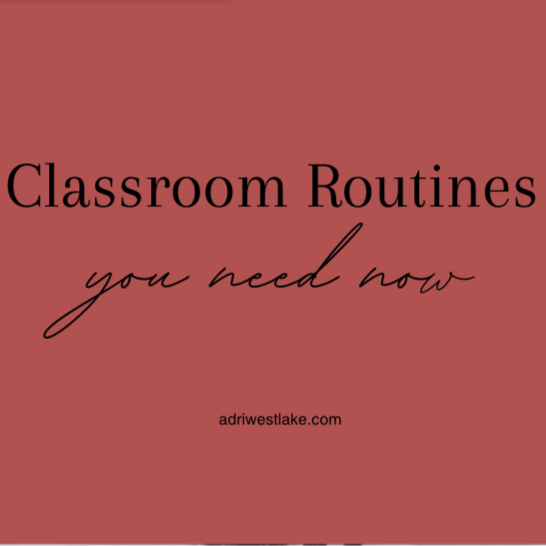Why Structure & Routine Are Key to a Classroom Management Plan
- Adri Westlake
- Mar 4
- 3 min read
“Students don’t care what you know until they know that you care.”
This quote, often attributed to John C. Maxwell, resonates deeply with educators for good reason. It reinforces the belief that strong teacher-student relationships are the foundation of successful teaching. It brings to mind inspiring figures like Miss Honey from Matilda or Mr. Keating from Dead Poets Society— the “favorite” teacher, the one who makes a lasting impact, the one we aspire to be.
While focusing on relationships can feel like the key to smooth sailing in the classroom, the truth is this: relationships alone won’t allow students to thrive. A focus solely on relationships can lead to chaos, wasted time, and mounting frustration for everyone involved.
The less glamorous truth? Structure is the secret ingredient of a stellar classroom management plan.
Structure vs. Relationships: It’s a Spectrum
Structure doesn’t mean rigid rules or strict control, just as focusing on relationships doesn’t mean neglecting discipline. Picture it as a continuum:
- On one end, there’s the teacher who prioritizes relationships but avoids setting boundaries. This teacher aims to be friends with students but struggles with routines and is confused when students don’t meet expectations.
- On the other end, there’s the rule-enforcer who micromanages every detail, lacks connection with their students and is disheartened by the lack of student engagement.
The sweet spot lies in the middle. Combining structure with relationship-building holds students to high expectations while creating the bonds that make teaching rewarding.
What Do You Mean by “Structure”?
Structure refers to how your classroom operates—both the instructional flow and the physical environment. Structure includes routines, clear expectations, and systems that create predictability for students.
How Does Structure Help Students?
Structure creates safety.
In cognitive science, there’s a concept called neuroception — our brain’s subconscious evaluation of safety or danger in an environment. For students, a well-structured classroom sends signals of safety. They know what to expect, where to go, and what to do.
This sense of security reduces stress and anxiety, especially for special education students, neurodivergent learners, and multilingual students who may face additional challenges. Structure essentially teaches students how to “be” students in your classroom, freeing them to focus on learning.
How Does Structure Help Teachers?
Strong routines make teaching easier.
The average teacher answers 200–300 questions a day. Without structure, many of these questions are repetitive:
- “What are we doing today?”
- “Can I go to the bathroom?”
- “Do you have a pencil I can use?”
Establishing routines eliminates these distractions, giving you back much-desired instructional minutes. A smoother-running class also means you have more time to focus on what truly matters: connecting with students and delivering engaging lessons.
Does Structure Kill Creativity?
Not at all!
“Routine” and “structure” aren’t about stifling creativity; they’re about sharing expectations. Think of them as a foundation. With clear routines in place, you can dedicate your energy to building creative and dynamic learning experiences.
Create structures for every type of classroom activity: discussions, desk work, group projects, computer work, labs, and more. When students know how each activity works, you can dive into the fun, creative parts without interruptions.
A Few Things to Keep in Mind
1. Expect Resistance.
Children, whether they are three or thirteen, naturally test boundaries. It’s developmentally appropriate for them to push back against rules and routines, especially if you’re introducing them mid-year. Stick with it. Over time, students will settle into the comfort that structure provides—even if they don’t consciously realize it.
2. It Takes Time.
Routines don’t happen overnight. They need to be explicitly taught, practiced, and reinforced. While it’s tempting to assume older students already know how to “do school,” remember that every teacher has unique expectations. Take time to teach yours, and stay the course until they are ingrained
Final Thoughts
Structure and relationships aren’t opposing forces—they’re partners. When paired together, they create classrooms where students feel safe, supported, and ready to learn. By establishing clear routines and holding high expectations, you’ll free up time and energy to connect with your students in meaningful ways.
Teaching isn’t about choosing between being the “cool” teacher and the “strict” teacher. It’s about creating an environment where both structure and care coexist, empowering your students to thrive.









Comments